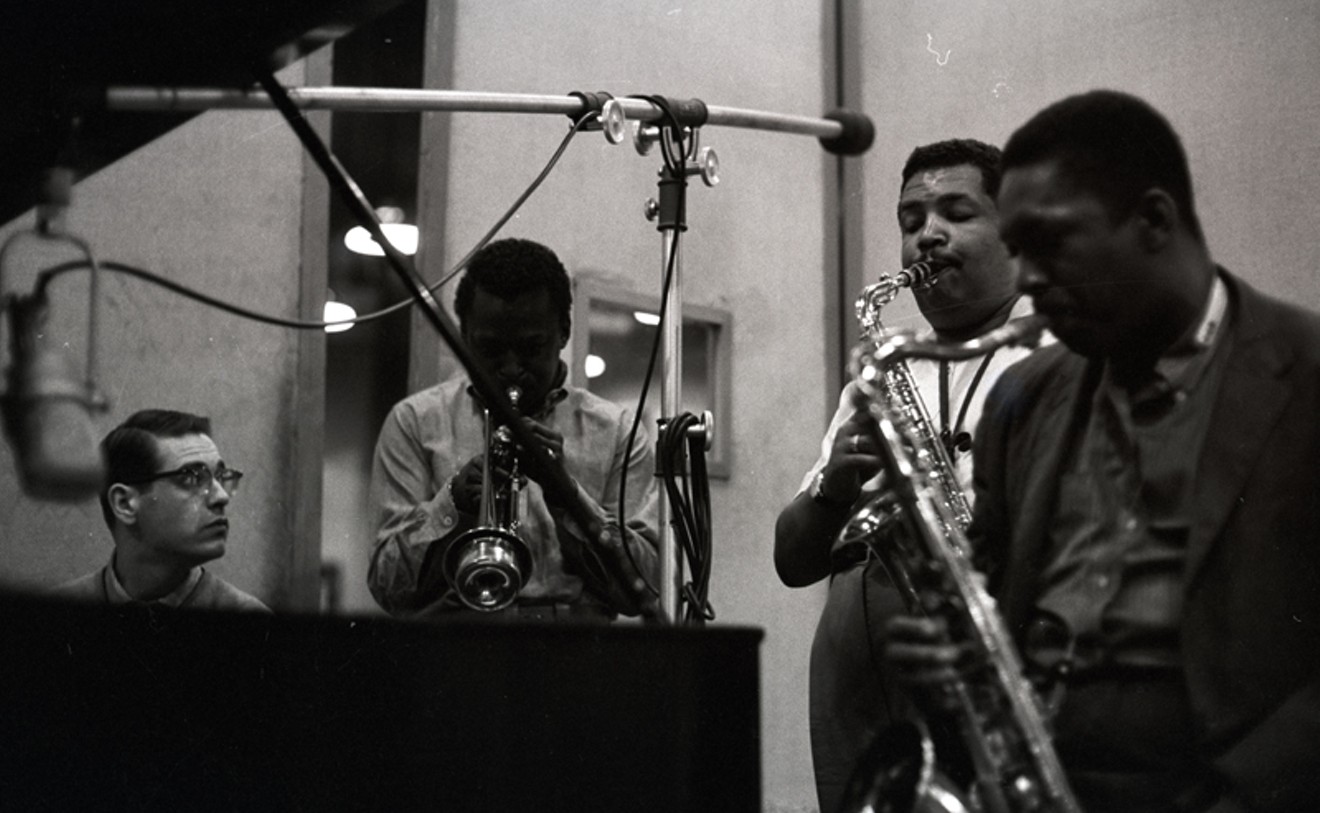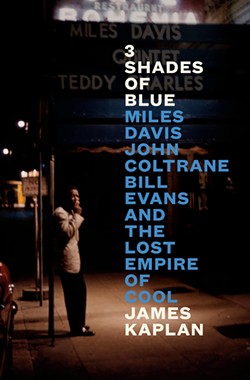And if you had one single jazz album in your apartment or home in one of those newfangled suburbs in the ‘60s, you were spinning Kind of Blue by Miles Davis.
The 1959 record is regarded by many a fan and critic alike as Davis’ premier sonic statement and possibly the best album of the entire jazz genre. It ranked #12 on Rolling Stone’s list of “The 500 Greatest Albums of All Time” and is more than 5X platinum. Jazz nerds toss around terms like “modality.”
And as per Davis’ usual recording technique, there was little rehearsal and lots of improvisation on the mixture of originals and covers. And in pre-streaming numbers, it remains the best-selling jazz album of all time (with latter day Davis bandmate Herbie Hancock’s Headhunters coming in at #2).
In addition to bandleader Miles Davis (trumpet), the septet who recorded the album included John Coltrane (tenor sax), Bill Evans (piano), Julian “Cannonball” Adderley (alto sax), Paul Chambers (bass), Jimmy Cobb (drums), and Wynton Kelly (piano)
Those first three names are some of the largest loomers in jazz history. Their paths to, during and after Kind of Blue are detailed in the fascinating, detailed and comprehensive book 3 Shades of Blue: Miles Davis, John Coltrane, Bill Evans, and the Lost Empire of Cool by James Kaplan (496 pp., $35, Penguin Press).
Kaplan—who also penned the two-volume definitive look at the life of one Francis Albert Sinatra—goes into similar depth hear tracking the three title musicians, concentrating on their musical ascension, studies, breakthroughs and disappointments, and high and low points. Both professional and personal.
Doing so, their distinct personalities leap off the page: Davis is mercurial, confident, cocky, and libertine. Coltrane is quiet, studious, obsessive, and focused. Evans is expansive, unsure, inventive, and precise. All three also shared at various points in their lives a pretty bad heroin habit, which they kicked (and unkicked, and kicked again) in different ways and for different lengths of time.
Interestingly, Evans—who was already playing with Miles before the record’s sessions kicked off—was the victim of a sort of reverse racism: Davis’ mostly Black live audiences didn’t take kindly to seeing a nerdy-looking “ofay” come out on stage. And they were vocal about it. Davis, in his usual style, would retort that he didn’t give a fuck about his pianist’s skin color—only how he played.
Other jazz giants appear in these pages from their various interactions with the three players: Monk, Mingus, Bird, Philly Joe, Diz. In fact, the fluidity in which scores of players fall in and out and back again into various live gigs, studio lineups, and informal jam sessions is…well…dizzying. Kaplan manages to keep it straight even for the non-expert reader.
This doorstop tome is almost 2/3rds gone before the seven musicians actually set foot into a New York Columbia Records studio to create Kind of Blue. And in a surprising but effective storytelling twist, Kaplan gets through the entire thing in a handful of pages: Two sessions, five songs. From a band which would never play together again.
Kaplan does a singularly great job with the “After Blue” chapters. For the big three, there was a lot ahead. Miles formed his Second Great Quintet, fusion, Bitches Brew, and retirement/unretirement. Evans would swing between guest spots and leader roles but seemed too many to coast. Both he and Davis would have harrowing years of continued drug, booze, and sex addictions, their bodies paying steep tolls.

LEFT: John Coltrane and Miles Davis (background) in the studio recording "Kind of Blue," 1959. RIGHT: Bill Evans yearbook photo for the Kappa Delta Pi National Education Society at Southeastern Louisiana University, 1949.
Left: Photo by Don Hunstein/© Sony Music Entertainment. Right: Photo Courtesy of Southeastern Louisiana University.
Evans died in 1980 at the age of 51 from a series of ailments, and Davis lasted until 1991 where at age 65 he died from a different series of maladies. In both cases, their appetites for substances—which never went away—contributed mightily.
I’m not sure why Kaplan in his title notes a “lost” empire of cool. Because despite all the permutations, subcultures and offshoots of jazz, the Cool has never gone away. And as Kind of Blue marks its 65th anniversary this year, it’s one record that reveals new joys and musical crevices with each listen. So 3 Shades of Blue—like the best of music books—just sends you back to the source.









